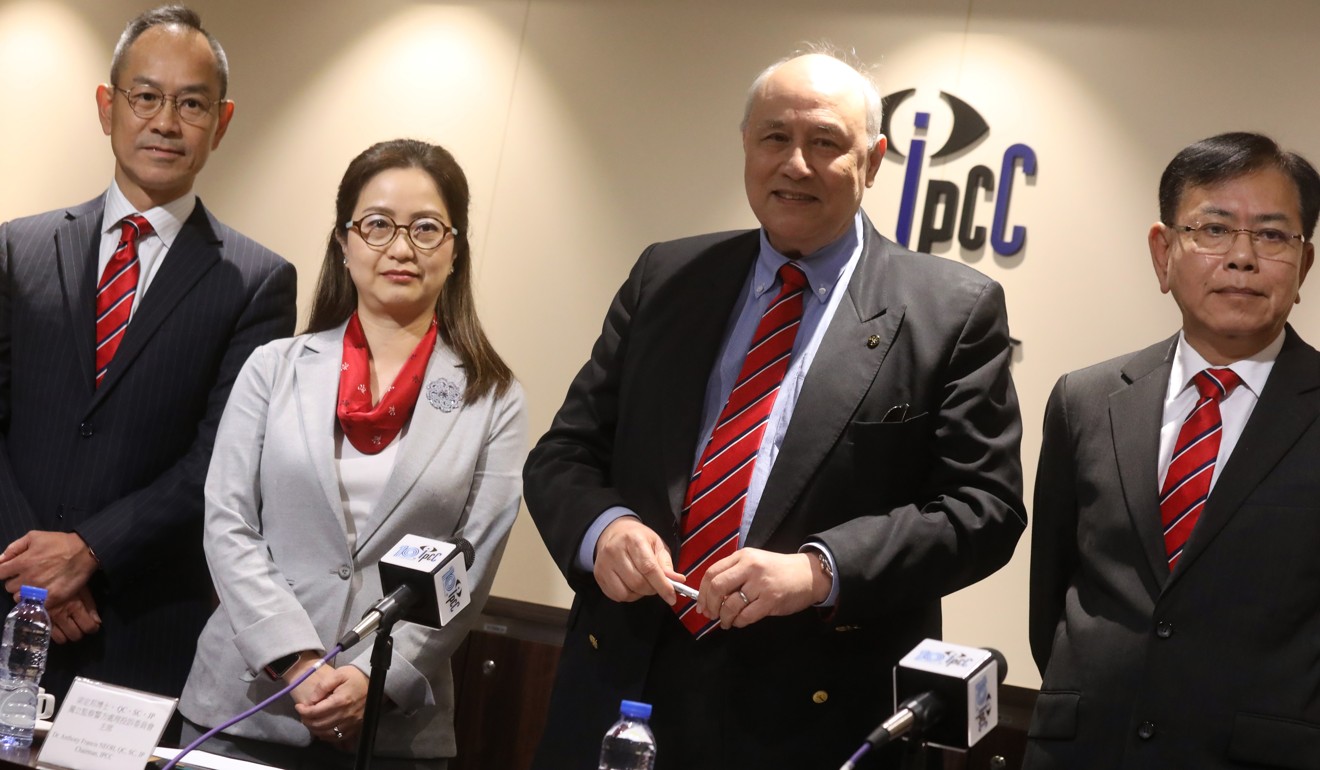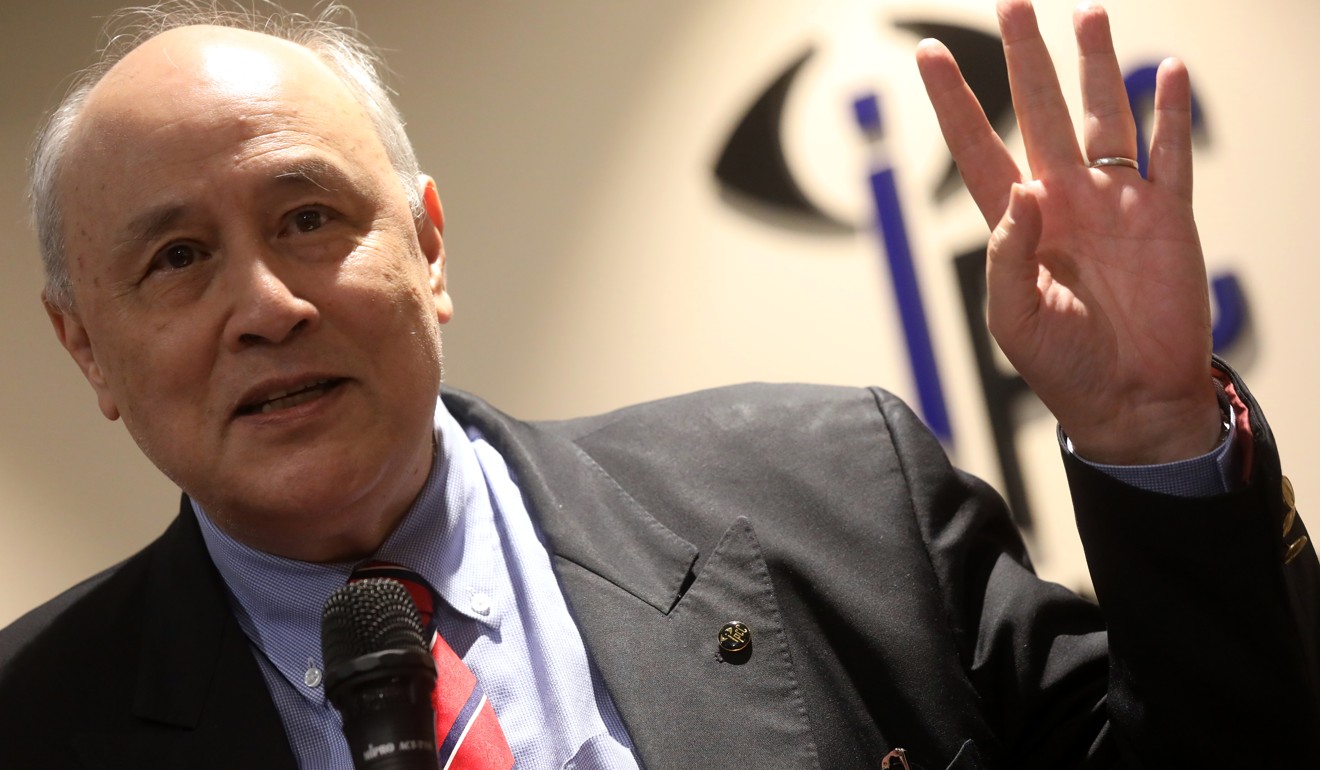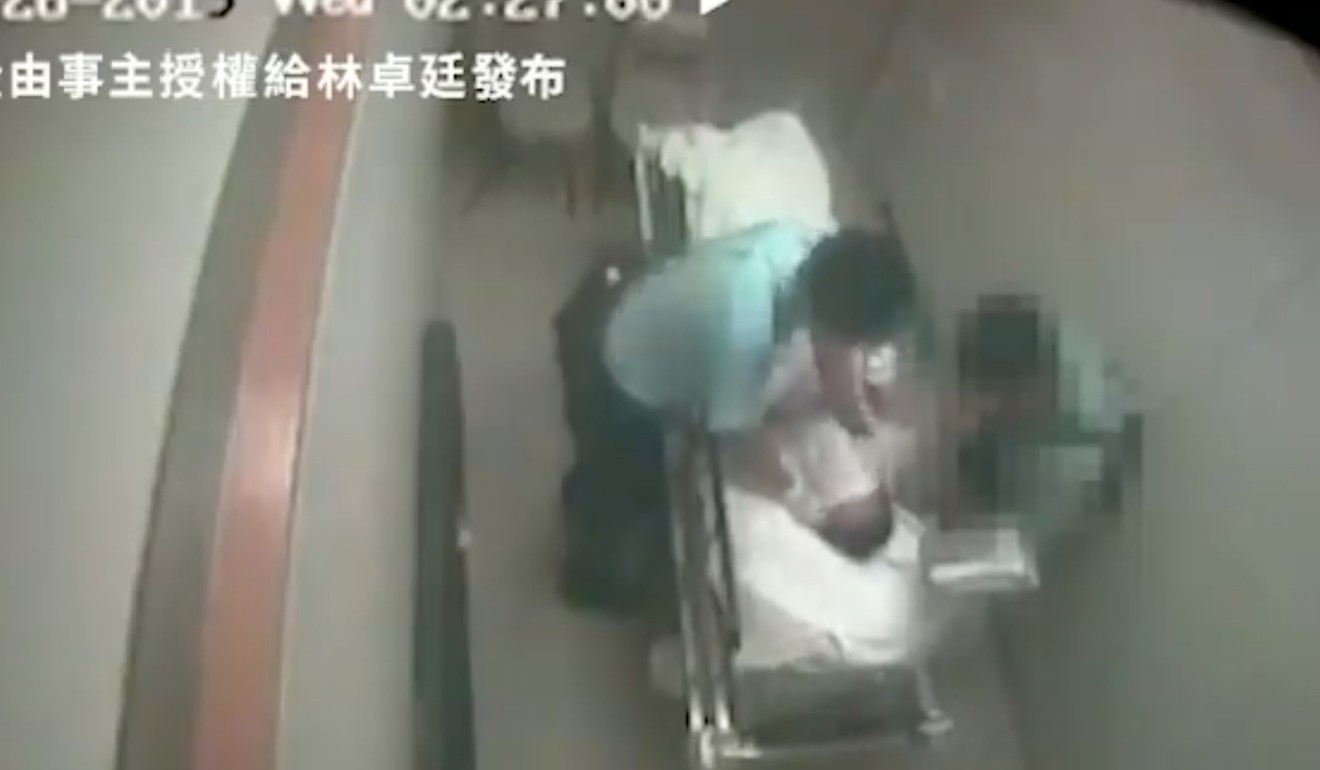
Identification of Hong Kong riot officers using undisclosed codes on helmets is ‘unsatisfactory’, police watchdog says, calling for clarity and accountability
- Method replaces badges used earlier and protects officers from doxxing, but move was never made public until IPCC’s press conference
- Watchdog also calls for explanation over separate incident of video showing drunk man being assaulted by police in hospital
Hong Kong’s police did not provide clear identification of its riot officers and more explanation is needed over the “unsatisfactory” handling of the matter, the head of a watchdog has said, citing accountability to the public and chief of the force.
Anthony Neoh, head of the Independent Police Complaints Council (IPCC), made the remarks on Friday after Commissioner of Police Stephen Lo Wai-chung confirmed that the force had replaced ID badges with alphanumeric codes on the helmets of its special tactical squad.

Police have been reeling from a massive public backlash after bearing the brunt of nearly three months of anti-government demonstrations triggered by the now-shelved extradition bill. Critics have accused police of using excessive force on protesters when dispersing crowds, while top brass countered that demonstrators had resorted to violence towards officers.
What are the weapons police use on anti-government protesters?
As of Thursday, the IPCC received a total of 183 complaints. Eighty-seven of the allegations, classified under neglect of duty, stemmed from complaints against officers for not showing their identification and for firing tear gas in crowded neighbourhoods, among other cases.
In the case of the police’s special tactical squad, also known as the Raptors, accusations against them centred on lack of identification, making it hard to lodge complaints against individual officers.
The IPCC is in the process of reviewing police operations in clashes from June 9 to July 2, and said it would also look into specific cases of individuals. Its first report would be published in the coming six months, under the advice of an expert panel comprising former heads of the police watchdog and scholars from Britain, Canada, Australia and New Zealand.
Neoh said the force had recently revealed to the IPCC that the Raptors carried identification codes on the backs of their helmets to avoid doxxing against them or their families. Doxxing involves the posting of private data of a person or of his or her loved ones online.

But the identification method was never made public by the force until IPCC’s disclosure on Friday.
“The alphanumeric identification is very small,” Neoh said. “We agreed it is not satisfactory and I hope the force can better clarify. That could help improve the relationship between police and citizens.”
Christopher Cheung Wah-fung, IPCC vice-chairman, said on Thursday that riot officers should not be required to show identification over fears of doxxing.
Anti-government protesters versus police: understanding the psychology of hate
But on Friday Neoh distanced himself from those remarks, saying officers should in fact display identification “as a matter of principle”, and that Cheung’s views did not represent those of the IPCC, nor was he involved in the ongoing review.
Pressed on whether Cheung should resign from the watchdog, Neoh would only say: “That is his problem, not mine, and I can’t decide for him.”
Neoh added at the press conference: “The identification involves an accountability system ... The commissioner should also hold his officers accountable.”

He also addressed a separate case not related to the protests, involving three officers arrested over the assault on a drunk man, 62, at a hospital. The man, surnamed Chung, was in custody at North District Hospital and footage showed him being hit on the head, abdomen and genitals by officers.
Police came under fire for the length of time they took to respond to complaints filed by Chung’s family. The incident happened in June but only came to light this week after a lawmaker released the footage.
How the embattled police force is holding the city back from the brink
The force earlier said the delay in investigating the complaints centred on it not being aware of cameras in hospitals, but staff confirmed the facility had signs on doors and walls warning people they were being recorded on surveillance cameras.
Neoh expressed concern over the case, saying the IPCC had requested that the force explain its handling of the incident to improve its complaint procedures.
“We will inquire about ... how decisions were made at every juncture, and whether procedures were followed, as well as why the CCTV evidence was not received,” IPCC deputy secretary general Daniel Mui Tat-ming said.

